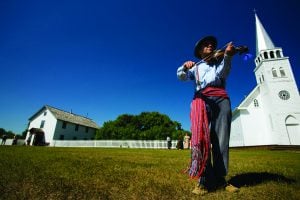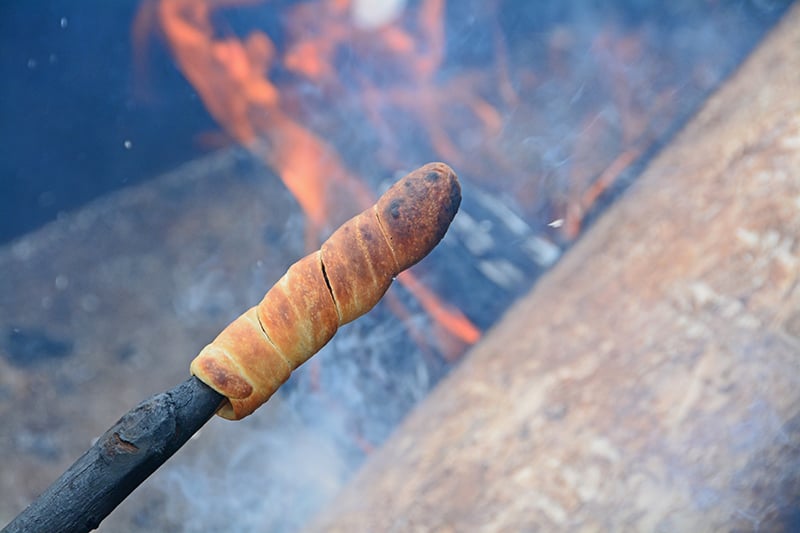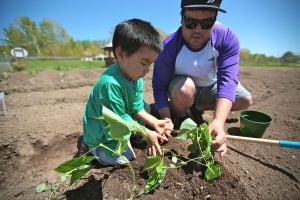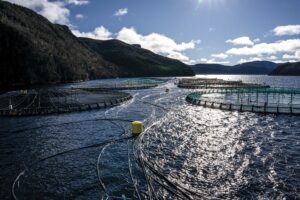
People & Culture
Kahkiihtwaam ee-pee-kiiweehtataahk: Bringing it back home again
The story of how a critically endangered Indigenous language can be saved
- 6310 words
- 26 minutes
This article is over 5 years old and may contain outdated information.
People & Culture

Candace Irvine has been working with Neechi Commons, an aboriginal grocery store, restaurant and community hub in Winnipeg, for ten years. Here she shares her secrets to Neechi’s perfect bannock.
People often have their own bannock recipe. Where did you get yours from?
My recipe has been passed down from my mother. I believe she learnt it from her aunt. She learned most of her cooking from her.
When do you normally like to make bannock?
I usually like to make bannock when we’re having soup, or when it’s a pot luck, or a family dinner. Like a family dinner- me and all my sisters and all the kids getting together, you know? I usually make bannock.
Do you have any memories associated with bannock?
I remember when my mom first taught us. She had five of us girls lined up at her counter showing us how to make it. And two of the girls couldn’t make it. And even over the years they tried and tried to make it, and it never turned out for them. Some people can make it, some people can’t. It’s funny because everyone says, “oh, can I get your recipe?” I say, “yeah, sure.” And they’re like, “you’re going to give your recipe out?” And I say, “no two people’s bannock are the same.” A lot of times they’re very close, but I haven’t tasted two bannocks that taste the same all this time. It’s just different–like how you knead it, how long you knead it… all different things like that come in to play.
What should people know about bannock?
I think it’s healthier than bread, and it’s easy to make. It’s made of things that you have on hand all the time.
Neechi’s Bannock Recipe:
Makes one large loaf for a family
Ingredients:
4 ½ cups of flour
3 rounded tablespoons of baking powder
2 ½ cups liquid – usually milk and water mixed together
½ cup of canola oilDirections:
You put the flour and the baking powder and you mix that. You make a well in the middle, then you put in the milk and water and oil. When you’re mixing that with your spoon, you kind of scrape it in, round and round.
After you get all that mixed up, you kneed it until it’s kind of a smooth texture. Then you dump it on the table and kneed it some more (you’ve floured the table under the dough so it doesn’t stick).
Then you use your rolling pin, and roll it out until it’s nice and smooth. And it’s usually about an inch thick. Then you poke it with a fork all over.
When I’m at home, I bake it at 350 degrees Fahrenheit for 25 minutes until it’s nice and golden brown. And that’s it, you’ve got your bannock.
Are you passionate about Canadian geography?
You can support Canadian Geographic in 3 ways:

This story is from the Canadian Geographic Travel: Summer 2015 Issue

People & Culture
The story of how a critically endangered Indigenous language can be saved

People & Culture
Gardeners dig into a history of resilience to feed people during COVID-19

Environment
Struggle and success in Atlantic Canada, where aquaculturists strive to overcome climate change and contamination while chasing a sustainable carbon footprint

People & Culture
The death of an unhoused Innu man inspired an innovative and compassionate street outreach during the nightly curfew in 2021